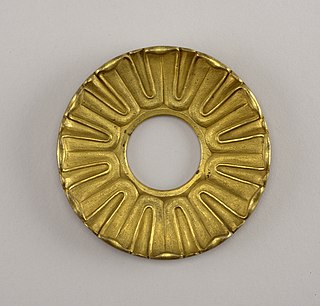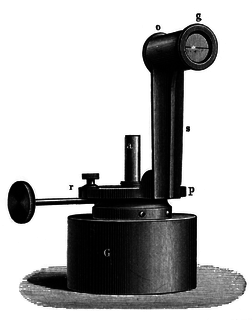 W
WA candle is an ignitable wick embedded in wax, or another flammable solid substance such as tallow, that provides light, and in some cases, a fragrance. A candle can also provide heat or a method of keeping time.
 W
WAn outdoor candle, which is also known a pitch torch or a garden candle is a large tealight-like candle that are lit outside. They are commonly found in Scandinavia, and are used as an outdoor decoration in private gardens, graves or at the side of roads or paths. They made from paraffin in a metal cup with thick centimetre wick, which heats up to 1000 °C. Due to this heat, and the fact they are designed to be weatherproof, they have to be properly stuffed out with a snuffer.
 W
WAn Advent candle is a candle marked with the days of December up to Christmas Eve. It is typically used in a household rather than a church setting: each day in December the candle is burnt down a little more, to the mark for the day, to show the passing of the days leading up to Christmas. As with reusable Advent calendars, some Advent candles start marking the days from 1 December, rather than the exact beginning of Advent. Some households will make a Christmas decoration out of sprigs of evergreen and Christmas ornaments, with the candle at its centre; others will simply put it in a candlestick. It is usually burned at the family evening meal each day.
 W
WAltar candlesticks hold the candles used in the Catholic liturgical celebration of Mass.
 W
WAngel chimes, also known as angel-abra, are a form of Christmas decoration popular in Europe and North America. They apparently have the same origins as the Christmas pyramid, which functions on the same principle. They differ from these, primarily, in being mass-produced from metal and having bell-ringing angels, whereas Christmas pyramids are usually crafted from wood and do not necessarily have bells.
 W
WA bobèche is a cup or ring at the top of a candlestick, used to catch melted wax running down the side of the candle. Usually made of glass, but often seen made of paper as well.
 W
WA candelabrum, sometimes called a candle tree, is a candle holder with multiple arms. The word comes from Latin.
 W
WA candle clock is a thin candle with consistently spaced marking that when burned, indicate the passage of periods of time. While no longer used today, candle clocks provided an effective way to tell time indoors, at night, or on a cloudy day. A candle clock could be easily transformed into a timer by sticking a heavy nail into the candle at the mark indicating the desired interval. When the wax surrounding the nail melts, the nail clatters onto a plate below.
 W
WA candle snuffer, candle extinguisher, or douter is an instrument used to extinguish burning candles, consisting of a small cone at the end of a handle. The use of a snuffer helps to avoid problems associated with blowing hot wax. Extinguishers are still commonly used in homes and churches.
 W
WA candle warmer is an electric warmer that melts a candle or scented wax to release its scent. The candle warmer shown is intended to be used with jar candles or candles in cups, not with taper candles or candles without containers large enough to accommodate all the melted wax. Some candle warmers have a built-in bowl in which the candle is placed.
 W
WA candle-pole was a pole with candles that was traditionally brought by several villages on Candlemas to the parish church in the southeastern part of Upper Carniola. The tradition was described and depicted by Johann Weikhard von Valvasor in the seventh volume of The Glory of the Duchy of Carniola (1689). The candle-pole consisted of a round and vividly coloured pole with three compartments, which had holes for numerous candles and the diameter of which decreased from the bottom up. It was decorated with small flags and various ornaments and jewellery. The money for the candle-pole was collected by koledari, singers who went from door to door. It was brought to the church by the strongest young man from the villages that created it, accompanied by other strong villagers. The tradition lasted until the first quarter of the 19th century, except for Komenda, where it lasted until ca. 1850 and in Kaplja Vas even later.
 W
WCandlepower is an obsolete unit of measurement for luminous intensity. It expresses levels of light intensity relative to the light emitted by a candle of specific size and constituents. The historical candlepower is equal to 0.981 candelas. In modern usage, candlepower is sometimes used as a synonym for candela.
 W
WA candlestick, chamberstick, or candelabrum is a device used to hold a candle in place.
 W
WThe Chemical History of a Candle was the title of a series of six lectures on the chemistry and physics of flames given by Michael Faraday at the Royal Institution in 1848, as part of the series of Christmas lectures for young people founded by Faraday in 1825 and still given there every year.
 W
WCire Trudon is a French candlemaker and the oldest wax-producing factory worldwide. Founded in 1643, it was the provider of the royal court of Louis XIV, as well as most of the great churches of France.
 W
WDikirion and trikirion are liturgical candlesticks, used by a bishop of the Eastern Orthodox and the Eastern Catholic Churches to bless the clergy and faithful. The words mean "dual candle" and "triple candle", respectively, and may also be called by the combined Greek form, "δικηροτρίκηρα", dikērotríkēra.
 W
WA Girandole is an ornamental branched candlestick or light fixture consisting of several lights, often resembling a small chandelier. Girandoles came into use about the second half of the 17th century, and were commonly made and used in pairs.
 W
WThe Gloucester Candlestick is an elaborately decorated English Romanesque gilt-bronze candlestick, now in the Victoria and Albert Museum in London. It was made for Gloucester Cathedral between 1104 and 1113, and is one of the outstanding survivals of English Romanesque metalwork.
 W
WA grave candle, grave lantern, death candle or a death lantern is a type of candle or lantern, which is lit in memory of the dead or to commemorate solemn events. The form of a lantern is commonly used in Christianity, whereas candles are more common in Judaism.
 W
WThe Hefner lamp, or in German Hefnerkerze, is a flame lamp used in photometry that burns amyl acetate.
 W
WCandle making was developed independently in many places throughout history.
 W
WCandlepower is an obsolete unit of measurement for luminous intensity. It expresses levels of light intensity relative to the light emitted by a candle of specific size and constituents. The historical candlepower is equal to 0.981 candelas. In modern usage, candlepower is sometimes used as a synonym for candela.
 W
WJulleuchter or Turmleuchter are modern terms used to describe a type of earthenware candle-holder designed and manufactured in Nazi Germany.
 W
WA luminaria or farolito is a small paper lantern which is of significance in the U.S. state of New Mexico in southwest United States at Christmas time, especially on Christmas Eve. They are also used in Hispanic culture. These paper lanterns have to some extent replaced the older tradition of the vigil fire luminaria with which they became confused.
 W
WThe candela is the base unit of luminous intensity in the International System of Units (SI); that is, luminous power per unit solid angle emitted by a point light source in a particular direction. Luminous intensity is analogous to radiant intensity, but instead of simply adding up the contributions of every wavelength of light in the source's spectrum, the contribution of each wavelength is weighted by the standard luminosity function. A common wax candle emits light with a luminous intensity of roughly one candela. If emission in some directions is blocked by an opaque barrier, the emission would still be approximately one candela in the directions that are not obscured.
 W
WThe candela is the base unit of luminous intensity in the International System of Units (SI); that is, luminous power per unit solid angle emitted by a point light source in a particular direction. Luminous intensity is analogous to radiant intensity, but instead of simply adding up the contributions of every wavelength of light in the source's spectrum, the contribution of each wavelength is weighted by the standard luminosity function. A common wax candle emits light with a luminous intensity of roughly one candela. If emission in some directions is blocked by an opaque barrier, the emission would still be approximately one candela in the directions that are not obscured.
 W
WA Paschal candle is a big, white candle used in liturgies in Western Christianity. A new Paschal candle is blessed and lit every year at Easter, and is used throughout the Paschal season which is during Easter and then throughout the year on special occasions, such as baptisms and funerals.
 W
WThe Paschal trikirion is a liturgical triple-candlestick used at Easter time in the Eastern Orthodox and Byzantine Catholic traditions.
 W
WThe Peace Candle is a tower-like structure erected every Christmas season in Easton, Pennsylvania. The approximately 106-foot (32 m) tall structure, which resembles a giant candle, is assembled each year over the Soldiers' & Sailors' Monument, a Civil War memorial located in the city's Centre Square. It is typically assembled in mid November and lighted over Thanksgiving weekend and disassembled in early February each year.
 W
WThe Peace Candle of the World, also known as the Scappoose Peace Candle, is an approximately 50-foot-tall (15 m) tower-like structure 18 feet (5.5 m) in diameter in Scappoose, Oregon, designed to resemble a candle. It was built in 1971 outside what was then the Brock Candles Inc. factory, which burned down in 1990. The land was formerly a dairy farm; factory owner Darrel Brock created the candle by covering a silo with 45,000 pounds (20 t) of red candle wax to advertise the factory.
 W
WPrice's Patent Candles, founded in 1830, is an importer and retailer of candles. The firm is headquartered in Bedford in England, and holds the Royal Warrant for the supply of candles. It is today the largest candle supplier in the United Kingdom, and the company holds an important place in the technological history of candle making.
 W
WA rushlight is a type of candle or miniature torch formed by soaking the dried pith of the rush plant in fat or grease. For several centuries rushlights were a common source of artificial light for poor people throughout the British Isles. They were extremely inexpensive to make. English essayist William Cobbett wrote, "This rushlight cost almost nothing to produce and was believed to give a better light than some poorly dipped candles."
 W
WThe Schlitz Christmas Candle is a candle-like structure unveiled every Christmas season in Schlitz, a small town in Hesse, Germany. It is approximately 42-metre (138 ft) tall, and is thought to be the largest non-wax candle in the world. The candle is created by draping a red cloth over the stone tower at the center of the town. The tower is then topped off with an electric flame to give the impression of a Christmas candle, which can be seen from great distances looming above the town's Tudor-style buildings. The tower used to form the candle is called the Hinterturm, which was built in the 14th century, and is the remnant of a castle that no longer stands. An elevator inside the Hinterturm takes visitors to the top of the tower.
 W
WSoy candles are candles made from soy wax, which is a processed form of soybean oil. They are usually container candles, because soy wax typically has a lower melting point than traditional waxes, but can also be made into pillar candles if certain additives are mixed into the soy wax.
 W
WA tealight is a candle in a thin metal or plastic cup so that the candle can liquefy completely while lit. They are typically small, circular, usually wider than their height, and inexpensive. Tealights derive their name from their use in teapot warmers, but are also used as food warmers in general, e.g. fondue.
 W
WA unity candle is a candle used in a wedding ceremony to symbolize two people joining in marriage.
 W
WA votive candle or prayer candle is a small candle, typically white or beeswax yellow, intended to be burnt as a votive offering in an act of Christian prayer, especially within the Anglican, Lutheran, and Roman Catholic Christian denominations, among others. In Christianity, votive candles are commonplace in many churches, as well as home altars, and symbolize the "prayers the worshipper is offering for him or herself, or for other people." The size of a votive candle is often two inches tall by one and a half inches diameter, although other votive candles can be significantly taller and wider. In other religions, such as Hinduism and Buddhism, similar offerings exist, which include diyas and butter lamps.
 W
WWax melters are devices used in the packaging and candle-making industries to melt wax.
 W
WA candle wick is usually a braided cotton that holds the flame of an oil lamp or candle. A candle wick works by capillary action, conveying ("wicking") the fuel to the flame. When the liquid fuel, typically melted candle wax, reaches the flame it then vaporizes and combusts. The candle wick influences how the candle burns. Important characteristics of the wick include diameter, stiffness, fire-resistance, and tethering.
 W
WThe Williamsburg Soap and Candle Company, known to millions as just the "candle factory", was located in the Norge section of James City County, Virginia, and first opened in 1965. It was located near the Williamsburg Pottery Factory and was a local icon and popular tourist attraction on the road to Williamsburg. It was founded by John Barnett, Sr., who moved a barn from a nearby farm and made it the first building of a complex which contained the manufacturing plant, numerous shops, and a restaurant. The factory was famous for making quality soap and candles.
 W
WA yahrzeit candle, also spelled yahrtzeit candle or called a memorial candle, is a type of candle that is lit in memory of the dead in Judaism.